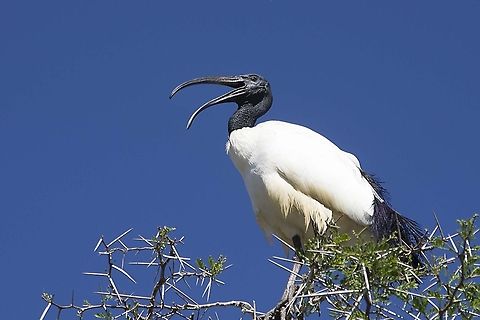
Appearance
An adult individual is 68 cm long with all-white body plumage apart from dark plumes on the rump. The bald head and neck, thick curved bill and legs are black. The white wings show a black rear border in flight. Sexes are similar, but juveniles have dirty white plumage, a smaller bill and some feathering on the neck.This bird is usually silent, but occasionally makes some croaking noises, unlike its vocal relative, the hadada ibis.
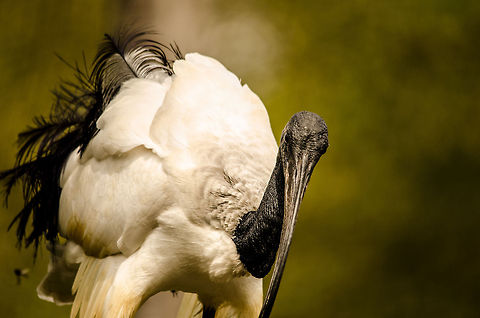
Naming
The African sacred ibis has been introduced into France, Italy, Spain, Taiwan, and Bahrain. Some studies indicate that the growing introduced populations in southern Europe have significant economic and ecological impacts, while others suggest that they constitute no substantial threat to native European bird species. The adaptable ibises supplement their diet by feeding at rubbish tips, which helps them to survive the winter in these temperate regions.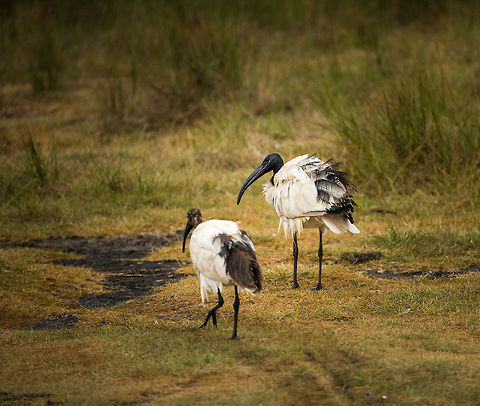
Distribution
A wading bird of the ibis family, Threskiornithidae, the sacred ibis breeds in Sub-Saharan Africa, southeastern Iraq, and formerly in Egypt, where it was venerated and often mummified as a symbol of the god Thoth. The African sacred ibis occurs in marshy wetlands and mud flats, both inland and on the coast. It will also visit cultivation and rubbish dumps.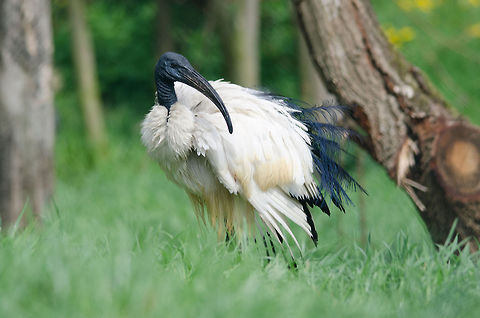
Status
The African sacred ibis is one of the species to which the ''Agreement on the Conservation of African-Eurasian Migratory Waterbirds'' applies.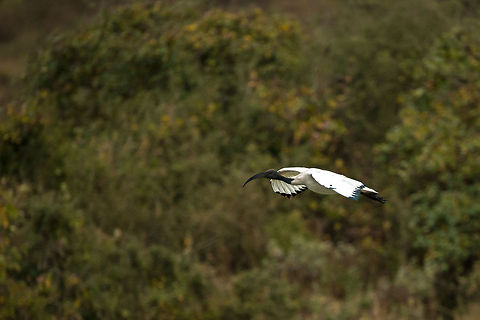
Habitat
A wading bird of the ibis family, Threskiornithidae, the sacred ibis breeds in Sub-Saharan Africa, southeastern Iraq, and formerly in Egypt, where it was venerated and often mummified as a symbol of the god Thoth. The African sacred ibis occurs in marshy wetlands and mud flats, both inland and on the coast. It will also visit cultivation and rubbish dumps.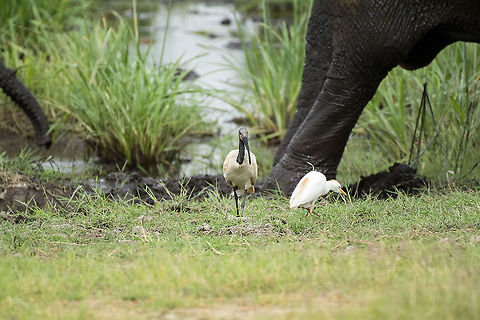
Reproduction
The bird nests in tree colonies, often with other large wading birds such as herons. It builds a stick nest, often in a baobab tree and lays two or three eggs.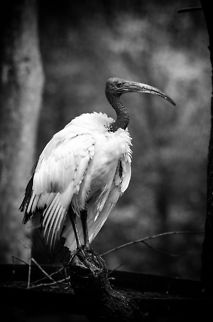
Food
It feeds on various fish, frogs, small mammals, reptiles and smaller birds as well as insects. It may also probe into the soil with its long bill for invertebrates such as earthworms.References:
Some text fragments are auto parsed from Wikipedia.